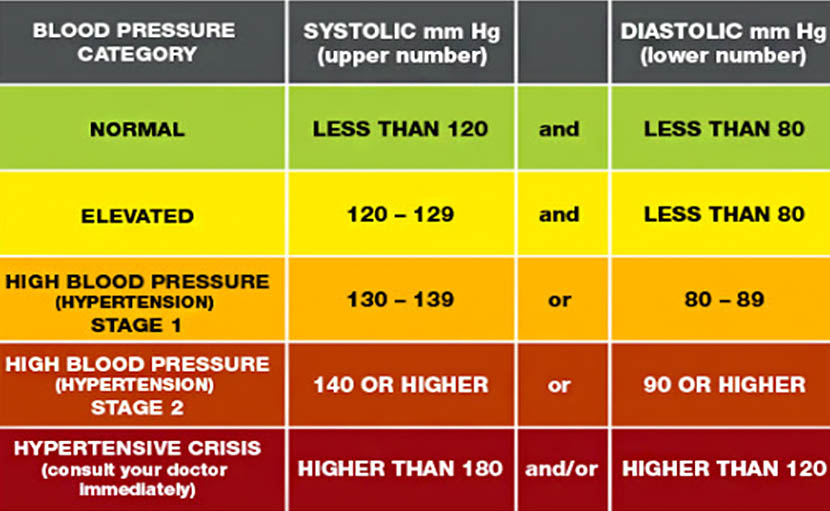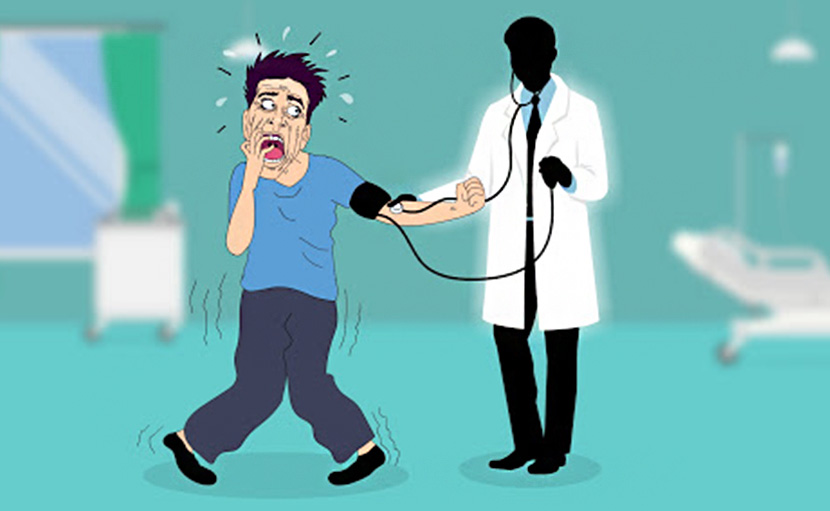
Accurate and simple rules for measuring blood pressure
The device used to measure blood pressure is called a sphygmomanometer in English . There are two types of devices available in the market, digital and analog. You will also need a stethoscope . There are many digital blood pressure machines available in the market like Omron, ALPK2 etc. But a lot of times misreading comes on digital machines. If you use digital machine, use good quality machine.
The correct rules for measuring blood pressure are step by step
1) The patient sits reclining in the back of the chair, with both hands on the table. The patient's hand should be placed in such a way that it is at the level of the heart. It is better to wear half sleeves or loose clothes. When folding the sleeves of the shirt, do not let it become tight. Tie the blood pressure measuring cup 2.5 cm above the elbow. Cannot be tied too loose or tight. The size of the cuff is different for obese people and children .
2) The diaphragm of the stethoscope should be placed by determining the position of the brachial artery with the hand above the elbow. When the diaphragm is placed on the cloth, it is difficult to hear the sound of the diaphragm and the cloth rubbing against it.
3) The meter scale should be kept at the level of the heart.

4) It is often seen that when measuring pressure, a gap is created between the actual systolic pressure and the sound. This is the oscillatory gap . To avoid this, first of all you have to look at the systolic pressure in the pulmonary method. How to see? The bladder should be inflated by placing the hand on the radial artery, meaning that the cuff should be inflated by pumping with a pump until the pulse stops. We feel the radial pulse with the help of three fingers on the side of the old finger 2 cm below the wrist joint. Radial pulse is nothing more than the pulse that we see in our hands. Where it will stop is systolic. Then another 30 mm above the meter should be raised. Then gradually reduce the pressure and hear the sound (korotcoff sound) caused by blood circulation in the brachial arteries . Systolic pressure is where the sound beginsAnd where the sound ends is called diastolic pressure .
What everyone needs to know about blood pressure
1) Normal blood pressure is systolic blood pressure 120 mm Hg or less and diastolic pressure 60 mm Hg or less .
2) Pre-hypertension is systolic blood pressure 120-139 mm and diastolic pressure 60-69 mm Hg . All of these people can turn into high blood pressure at any time.
3) If systolic blood pressure is 140 mm Hg or above in both arms or diastolic pressure is 90 mm Hg or above, then it is called high blood pressure.
4) If systolic blood pressure is 90 mm Hg or less or diastolic pressure is 60 mm Hg or less, then it is called hypotension .

Some tips
1) Measuring blood pressure only once can never be called high blood pressure. At least twice a day for a total of 7 days, excluding the first reading of the first day, if the average is 140/90 mm Hg or more, then it can be called high blood pressure.
2) It is better not to measure blood pressure after drinking tea-coffee, after exercise, after eating or smoking or during extreme instability.

3) White coat hypertension means that in some patients in the hospital or in the chamber, the pressure may be higher due to anxiety or worry, but in normal condition the pressure is normal. In their case too, you have to measure the pressure at home for 7 days. The pressure should be measured after a while after the patient arrives.
4) The patient will not speak while measuring the pressure. Can't get excited.
5) The pressure measuring time pissing down can not be left to the readings will be wrong.
I hope you find this article useful. We should all keep the above information in mind. And if you follow the tips, you will know the correct blood pressure. If the blood pressure is high, control your lifestyle according to the doctor's advice and take medicine if necessary . Stay well, stay healthy!
Photo-Collected: Imagesbazar.com; MyCircleCare.com; Heart.org






0 Comments